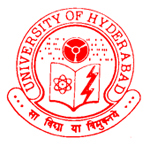Prof. Dr. Francisco M. GoycooleaUniversity of Münster Institute of Plant Biotechnology and Biology Nanobiotechnology Group Schlossgarten 3 48149 Münster Germany |
|
|
| Phone: Fax: Email: Net: |
+49 251 8324864 +49 251 8323823 goycoole@uni-muenster.de www.uni-muenster.de/Biologie.IBBP/aggoycoolea/index.html |
|
Our research Group at IBBP-WWU is focused in the study of advanced nanostructured biomaterials based polysaccharides and proteins, both in their fundamental aspects and their application in the life sciences. Designed on a rational basis, biopolymer-based nanostructured materials are intended as innovative platforms for biotechnological, biomedical, pharmaceutical and food applications. To this end, a library of biocompatible biopolymers (polysaccharides, food proteins and proteoglycans), surfactants, and their combined materials, are presently utilized under “bottom-up” approaches by exploiting their physicochemical properties such as their capacity to self-assemble in the presence of specific ions, and/or natural crosslinking agents, so as to harness materials with at least one dimension in the sub-micron scales (<1000 nm). By virtue of this, “soft” nanomaterials such as colloidal matrix-type nanoparticles, nanogels, nanocapsules or nanofibers can be harnessed. The conditions involved in the preparation of these materials are often very mild (e.g. aqueous conditions, room temperature, gentle stirring), thus, these technologies are suitable for the preservation of the biological activity of sensitive macromolecules (e.g. hormones, plasmids, RNA, growth factors, vaccines, etc.). Biopolymers sourced from different sources of biomass (plants, microorganisms, seaweeds and animal waste), are utilized in their purified form as the major building blocks of these materials. These biopolymers include polysaccharides, namely: Chitosan, alginates, hyaluronan, dextran sulfate, pectins, galactomannans, among other; and proteins either from animal, plant or marine sources or recombinant fusion proteins expressed in heterologous expression systems. Understanding the relation between the chemical structure, the physicochemical properties and conformations and the biological activity of the individual “building blocks”, is the key to develop innovative “soft” nanomaterials with the capacity to perform specific functions in a more efficient and effective rational basis.
Indeed, by exploiting their intrinsic chemical and physicochemical and biological properties such as the capacity to form local ordered structures, hydrated gel networks or colloidal particles and to stabilize oil/water interfaces, new bottom-up strategies are exploited in the design and engineer innovative nanostructured materials with tailor-made properties and bioactivity. By modifying their surface properties and architecture, “smart” materials that react in specific and predictable ways to their microenvironment, can be harnessed. We are particularly interested in achieving nanoparticle systems with targeting properties towards specific molecules and receptors in bacteria, fungi and mammalian cells.
The major research lines of our group are:
- Development of innovative nanobiomaterials (nanospheres, nanocapsules, nanogels and nanofibers) based on biopolymers (polysaccharides and proteins) under “bottom-up” approaches by exploiting their inherent physicochemical properties to generate self-assembling systems. Understanding of the role of the biophysical properties of the harnessed systems and the biological activity and overall functionality.
- Understanding the fundamental principles that govern mucoadhesion of polysaccharides and the nanostructured materials derived from them. Mucin is a glycoprotein of enormous structural complexity. Although mucoadhesion of biomaterials has been extensively investigated, the fundamental interactions and underlying mechanisms that govern the mucoadhesive behavior of polysaccharides are still widely ignored.
- Development of “smart” nanomaterials. This includes the search for suitable strategies to modify natural biopolymers so as to harness materials with the capacity to respond to physical and chemical stimuli in a complex biological environment (e.g. subtle changes in temperature, pH and specific chemicals), thus performing specific positive/negative feedback functions in living systems.
- Development of nanomaterials able to control quorum sensing (QS) processes in bacteria and thus exert control on the expression of virulent responses (e.g. luminescence, biofilm formation in biological and inert surfaces). To this end, several strategies are explored: surface-modified materials, controlled delivery of new molecules able to bind specific receptors. The different approaches currently investigated are aim to establish new non-antibiotic strategies to fight pathogens with relevance to human and animal health, agriculture, aquaculture, food and cosmetics.
- Nanobiomaterials as drug and gene carriers able to exert controlled release of bioactive molecules with application in biomedicine and biotechnology. For instance, permeabilization of large molecular weight protein molecules across the buccal, stomach or intestinal mucosa, or across the blood-to-brain barrier; non-viral gene delivery.
- Surface modification of nanostructured materials to confer them labeling, molecular recognition, antibacterial adhesion and targeting properties. In this respect, we are focused in the design of nanoparticles for the selective quenching of specific molecules. Various approaches are explored: Molecular imprinting; decoration of the surface with specific functional moieties such as recombinant proteins. In parallel, we are conjugating chemically specific bioactive molecules in polysaccharides as a strategy to enhance the permeability across the blood-to-brain barrier.
- Mathematical modeling of biopolymer gelation, nanomaterials behaviour and other critical phenomena in living systems.
Techniques and expertise provided: Extraction, isolation, purification and characterization of polysaccharides. Techniques to prepare “soft” nanostructured materials of different type (nanoparticles, nanocapsules, nanogels). Molecular imprinting of biopolymer based materials; microviscosimetry; rheology; differential scanning microcalorimetry; polarimetry; circular dichroism; scattering techniques (DLS, synchrotron SAXS); microscopy (TEM, CLSM and SEM); spectroscopic techniques (UV/VIS, FTIR, NMR; fluorescence); HPLC-UV-VIS; in vitro assays in different animal cell culture lines (cytotoxicity, TEER, permeability); bioactivity assays in bacteria, fungi and plant cells (in collaboration with Prof. Bruno M. Moerschbacher).




